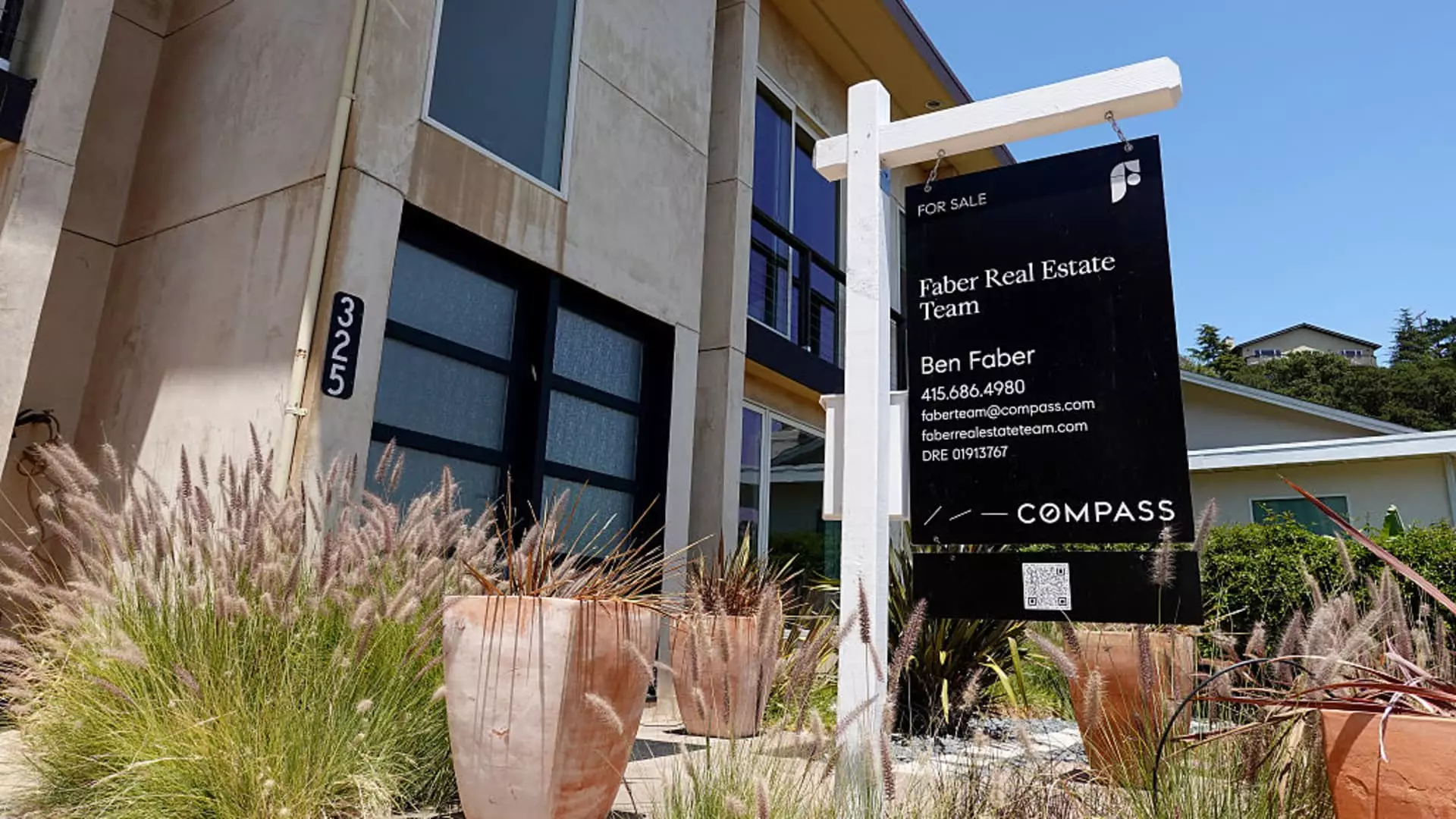The housing market, once a hotbed of frenzied activity, is now experiencing a seismic shift as the pendulum of supply and demand swings away from a sellers’ paradise to a more tempered environment. An analysis of recent trends shows a significant cooling of home prices attributed to rising supply and dwindling demand. The S&P CoreLogic Case-Shiller Index reported an annual home price increase of only 2.7% in April— a signal of an undeniable deceleration in what has been a relentlessly upward trajectory. This might sound like a whisper compared to the robust 3.4% increase in March, and it underscores a growing concern: the housing bubble may finally be deflating.
It’s essential to recognize that the landscape is evolving more rapidly than the statistics can convey. A striking point made by Nicholas Godec, head of fixed income at S&P Dow Jones Indices, is that the once-coveted pandemic hotspots have become the laggards as “historically steady performers” from the Midwest and Northeast are now outperforming them. This indicates a market maturing beyond speculative waves into one that is increasingly shaped by fundamental economic factors. However, while this shift might sound prudent, it raises troubling questions about the future for those hoping to climb the property ladder.
The Emerging Reality of Regional Disparities
New York City has seemingly resumed its crown as a prestigious market, with prices surging 7.9% year-over-year, followed closely by Chicago and Detroit. Meanwhile, the Sun Belt’s rise during the pandemic has come tumbling down, with cities like Tampa and Dallas experiencing negative growth. The disparity between these regions suggests that the market is not simply adjusting but rather recalibrating—leaving many potential homeowners in competitive dust. It’s a bewildering reality for first-time buyers who are particularly vulnerable to such dramatic shifts in market health and viability.
The most disheartening aspect, however, remains the plight of first-time homebuyers. Once making up roughly 40% of transactions, their share plummeted to a mere 30% for May sales. This is not merely a statistic about numbers; it reflects a generational crisis where high mortgage rates, hovering over 7%, are making homeownership an increasingly distant dream. When monthly payments reach generational highs, many are effectively locked out of what should be an attainable aspiration.
Supply Issues Compounding the Crisis
There are whispers of a continued influx of homes onto the market, yet this burgeoning supply remains coyly below pre-pandemic levels. A recent Redfin report highlights that only 6% of sellers are in danger of selling at a loss. This is a slight uptick from last year, but nonetheless signifies resilience amongst existing homeowners. It’s a self-imposed bottleneck; individuals are clinging to their sub-4% mortgage rates, paralyzing the market under the weight of indecision and fear.
This deliberate restraint on the part of current owners means that a genuine market correction, while desired by some, continues to be stifled by the existing supply-demand imbalance. As Godec rightly pointed out, this contributes to a price floor that protects the market from the drastic declines reminiscent of the subprime mortgage crisis; however, it also raises important questions about accessibility and equity in homeownership. The inertia in the market potentially preserves value for existing homeowners but impedes newcomers from even entering the arena.
Consequences of an Unstable Future
The structural deficiencies in our housing market present a growing threat, not merely to prospective homeowners but to the economy at large. A market characterized by stagnant growth and persistent supply shortages may serve as a ticking time bomb in the affordability crisis that manifests itself throughout society. If young families and individuals continue to be priced out of the market, the ramifications could lead to a generation of renters who are disenchanted and devoid of the equity that comes with homeownership.
As we witness this cooling off of once feverish home price gains, it’s crucial to understand that the ramifications extend well beyond housing statistics. They speak to our socio-economic fabric, laying bare the disparities and urgencies that must be addressed. A recalibration of the housing market is needed—one that embraces not just stability for existing homeowners but considers humane and accessible pathways for first-time buyers into a world that should be rightfully theirs. The economic wheels are in motion, but without conscientious intervention, they risk turning unwittingly toward exclusion rather than inclusion.

Leave a Reply